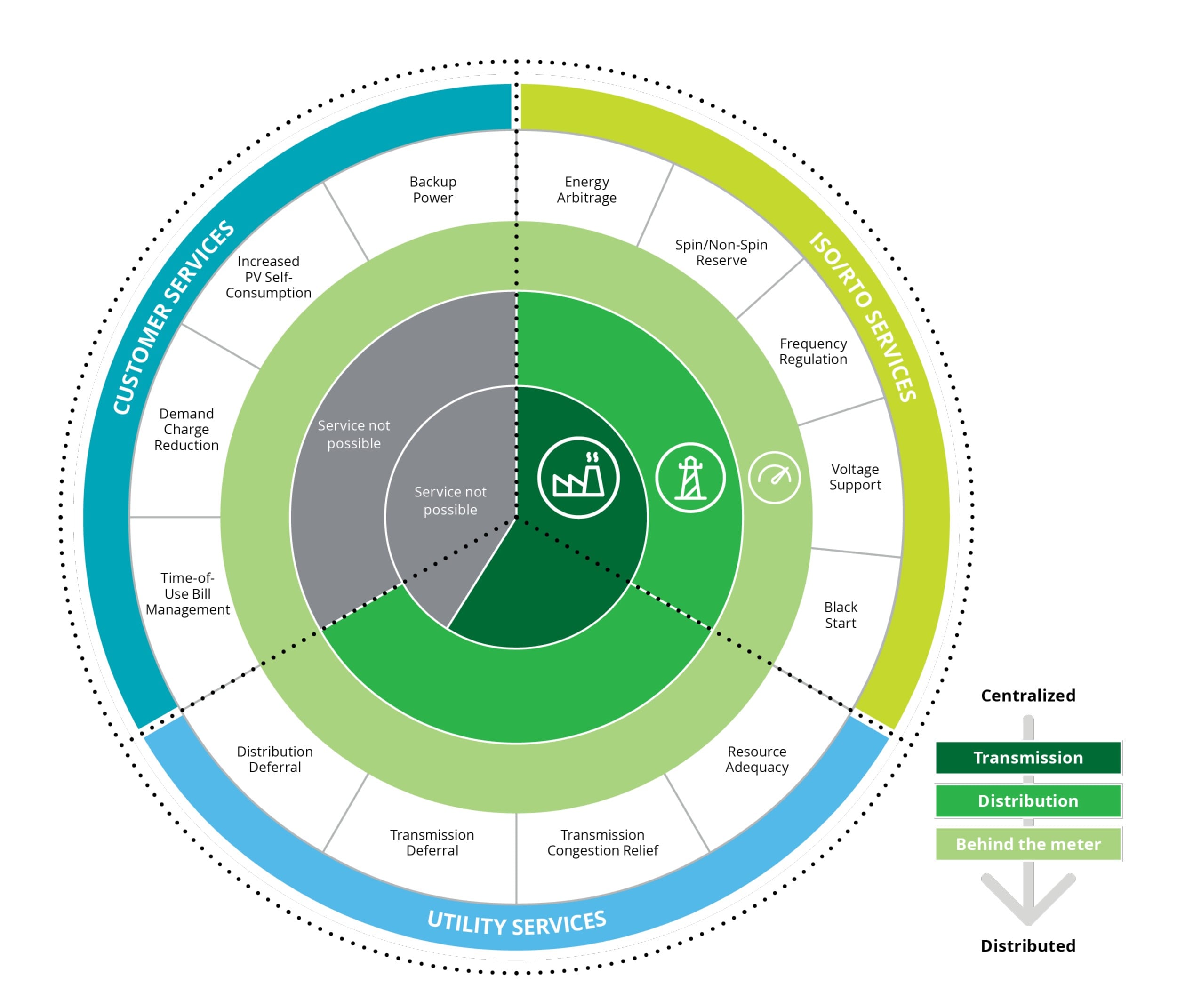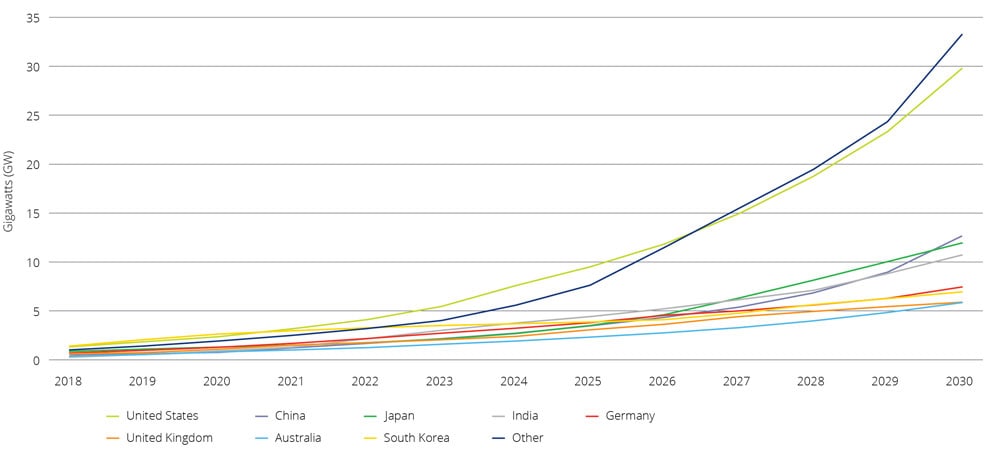Global energy storage
Digitization and market innovation accelerate battery storage deployment
Battery storage is having its moment. In addition to flexibility and rapidly falling prices, advances in digital technologies such as artificial intelligence, blockchain, and predictive analytics are spurring innovative storage business models that were nearly inconceivable a few years ago. This paper—from our Center for Energy Solutions—addresses these and other key drivers that are transforming the global energy storage market, as well as challenges to overcome.
Global trends in battery storage
Energy storage is gaining traction around the world and could fundamentally change electricity market dynamics. To understand these shifting dynamics, we peered beneath the aggregate growth projections to examine how some of the more active nations in renewable development and grid modernization are now approaching it. These countries include Australia, Chile, Germany, Japan, India, Italy, South Korea, the United Kingdom, and the United States.
Particularly focusing on battery storage, which is presently the leading technology, our examination sought to uncover what has been driving the push for energy storage in these nations and what utilities and policymakers have been doing to define battery storage, develop storage markets, and to support ongoing deployment.
To read mini-case studies on how leading countries are approaching renewable energy storage, download our full report, Supercharged: Challenges and opportunities in global battery storage markets.
Key market drivers
What is driving the push for energy storage?
- Cost and performance improvements. Particularly relating to lithium-ion batteries, driven by expanding electric vehicle markets and related manufacturing economies of scale, costs are dropping while performance is improving.
- Grid modernization. The growth of battery storage goes hand-in-hand with grid modernization efforts, including the transition to smart grids. Batteries help to unlock the full potential of smart technologies, and vice versa.
Global movement toward renewables. Broad support for renewable energy and emissions reduction is also driving adoption of battery storage solutions. This is especially apparentwithin the corporate and public sectors.- Participation in wholesale electricity markets. Battery storage can help balance the grid and improve power quality regardless of the generation source. Nearly every nation we examined is revamping its wholesale market structure to allow batteries to provide capacity and ancillary services.
- Financial incentives. South Korea, Italy, and other nations are increasing the availability of financial incentives for storage investment. This reflects the growing awareness of policymakers of the range of benefits battery storage can deliver throughout the electricity value chain.
- Phase-outs of FITs or net metering. Reduction of feed-in-tariffs (FITs) or net metering payments is emerging as a driver of behind-the-meter battery deployments in some countries, as customers strive to derive maximum value from their rooftop solar installations in the absence of these incentives.
Desire for self-sufficiency. Motivations for purchasing storage systems are not purely financial. In Germany, for example, ecological motives, independence from utilities, resiliency, and technical curiosity are all thought to be motivations.1 Similarly, self-sufficiency is a strong driver in Italy, the United Kingdom, and Australia.2, 3- National policy. Many countries are turning to renewable energy storage to reduce dependence on energy imports, enhance the reliability and resiliency of their systems, and move toward environmental and de-carbonization targets.
Lithium-ion battery prices fell 80% from 2010–2017 ($/kWh)
Source: Bloomberg New Energy Finance, Lithium-Ion Battery Price Survey
Note: The survey provides an annual industry average battery (cells plus pack) price for electric vehicles and stationary storage. Stationary storage developers paid about $300/kWh for battery packs in 2017—51 percent more than the average automaker price of about $199. This is typically due to much lower order volumes.
*Click image to enlarge
Challenges in global battery storage markets
Prominent barriers to storage deployment can be traced to the speed with which battery storage technologies and their applications are evolving, and to the multiplicity and flexibility of battery storage. They include:
- Perceptions of high prices. Costs have been dropping so quickly that decision-makers may have outdated notions about the price of systems, thinking that batteries still cost the same as they did a couple of years ago, or even six months ago.
- Lack of standardization. Participants in early stage markets often contend with diverse technical requirements as well as varied processes and policies. Battery suppliers are no exception, making lack of standardization a roadblock to further deployment.
- Outdated regulatory policy and market design. As can be expected with emerging technologies, regulatory policy is lagging the energy storage technology that exists today. Besides wholesale market rules, retail rules will also need to be updated, especially as residential and commercial and industrial interest grows.
- Incomplete definition of energy storage. Energy storage is having an identity crisis, with stakeholders and policymakers around the world wrestling with how to define fast-acting battery storage.
The storage story
Energy storage isn't just about integrating intermittent wind and solar output: Battery solutions, which can be deployed rapidly and with pinpoint precision, can be used to make the overall grid more efficient and resilient, regardless of the generation sources. This makes the storage story all the more compelling.
To learn more about the progress and promise of battery storage as a global phenomenon, we invite you to download the full report to explore the country-specific data and use cases featured throughout this paper.



